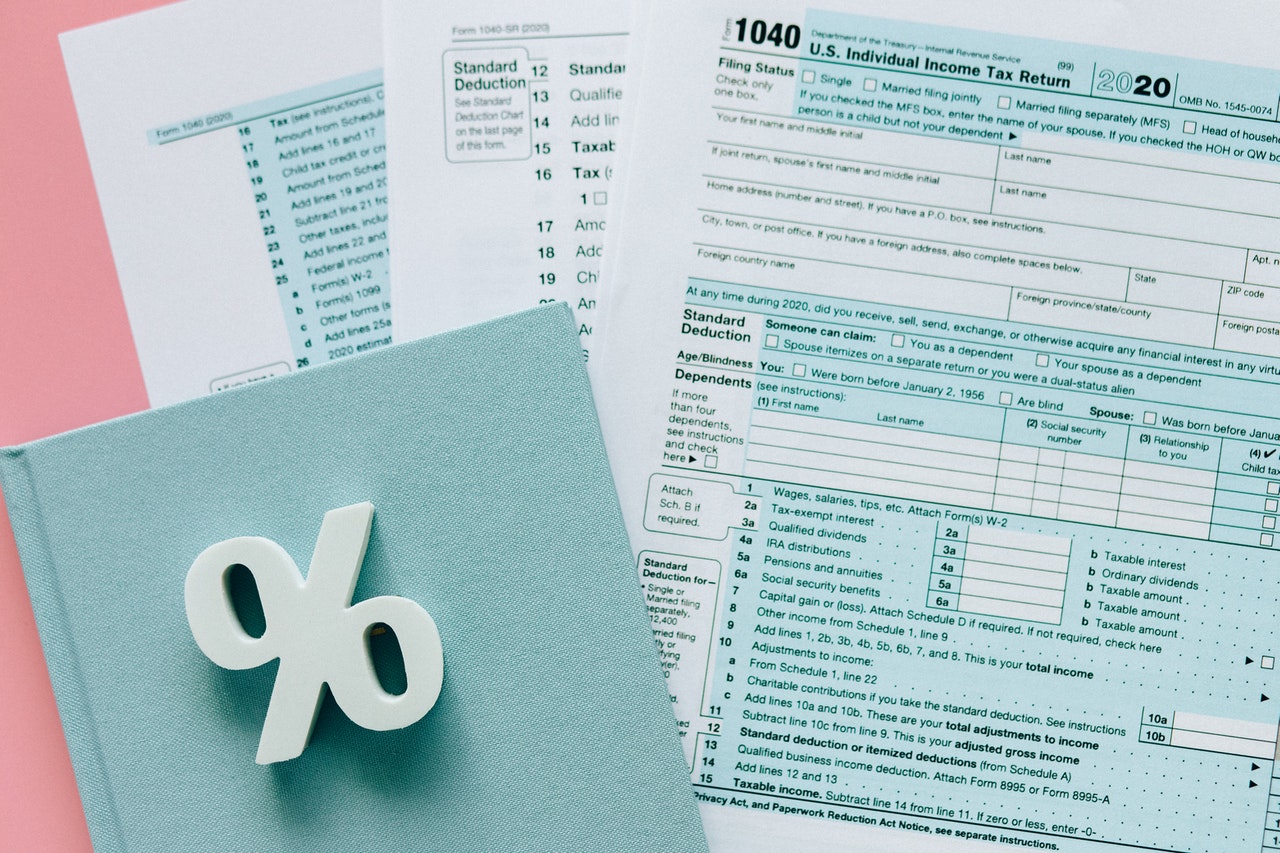Introduction: Why do private corporations receive Refundable Dividends?
Canada’s Income Tax Act was originally drafted with three main principles in mind: equity, simplicity, and fairness. In essence, the overall goal of the Income Tax Act is to remove incentives or disincentives for structuring one’s affairs in a particular manner in order to achieve tax savings. The conceptual goal is “neutrality” – the Income Tax Act goes to great lengths to achieve this purpose, though it is not always successful.
Over the last century of the Income Tax Act, and its predecessor the Income War Tax Act, one of the largest problems to solve was that of equity – for example, those who could afford to incorporate a corporation would structure their affairs to invest through a holding company to take advantage of the lower corporate tax rate, thus achieving a significant tax deferral. Those who could afford to incorporate and invest through the corporate structure would be able to accumulate profits without paying the much higher personal tax rates, allowing their capital to grow on a significantly tax deferred basis. Clearly, for those who could not afford a corporate structure, this was not an “equitable” outcome.
In order to combat this, the Department of Finance created a series of rules related to the “aggregate investment income” earned by corporations. Aggregate investment income is defined broadly as income from a “passive” source. Passive income includes dividends, rents and interest, all sources of income that are considered to require less time and management to earn, unlike active business income which as a matter of public policy is taxed at the lower corporate rate.
The aggregate investment income rules found in section 129 of the Tax Act seek to eliminate this advantage. Section 129 creates a regime of dividend refunds to address the issues.
While the complex set of rules around dividend refunds and refundable dividend tax on hand may seem unintuitive, there is a good tax policy reason behind them. Dividend refunds are part of a tax integration system within the Canadian Income Tax Act. Tax integration refers to the full or partial elimination of double taxation on corporate income. Without integration, corporate income is taxed at least twice: first at the corporate income level and second at the individual level as shareholder dividend income or capital gains. When income flows through other corporations that receive dividend income, without integration it could be taxed more than twice. Double taxation disincentivizes incorporation and the associated benefits such as limited liability as well as distorts investment decisions and equity financing. In addition, as we have seen, tax integration rules also work to mitigate any tax benefit an individual may receive by earning income through a corporation compared to directly earning the income themselves. One of these benefits is the deferral of tax paid on passive investment income. This is a main policy rationale for having the refundable dividend tax on hand accounts.
The purpose of refundable dividend tax on hand accounts (“RDTOH”) is to account for tax paid to prevent taxpayers who earn passive investment income through a corporation or a series of corporations from receiving a tax-deferral advantage on income tax. This tax that accumulates in the RDTOH accounts is tax paid by private corporations under section 129 or on the receipt of dividends under Part IV of the Income Tax Act.
Aggregate Investment Income & Part IV Tax: What Are They?
Tax on Aggregate Investment Income applies to passive income earned by a corporation, while Part IV tax generally applies to taxable dividends received by a private corporation from another corporation.
Aggregate Investment Income is subject to three modifications, first, the small business deduction under s. 125(1) is not applicable. Secondly, the general corporate rate reduction under 123.4(1) is denied. Third, aggregate investment income is subject to an additional refundable tax of 10.66%. The result is a total federal tax rate of 38.66%, slightly more than the highest marginal federal personal rate. This encourages individuals to “flush out” dividends rather than holding them as retained earnings in order to eliminate the slightly increased tax.
On the other hand, for Part IV tax, dividends received from a corporation unrelated to the recipient will be subject to Part IV tax. If they are received from a corporation that is related to the recipient, they will be subject to Part IV tax only if the payee of the dividends receives a dividend refund under the Income Tax Act for paying the dividends. Generally, if one of these criteria is met, Part IV tax will be levied at a rate of 38.33% on a corporation’s taxable dividends.
RDTOH: What is the Refundable Dividend Tax on Hand Account?
As indicated above, the RDTOH account accumulates the tax paid on Aggregate Investment Income and tax paid pursuant to Part IV of the Income Tax Act. These taxes prevent taxpayers who earn passive investment income through a corporation from receiving a tax-deferral advantage on income tax. The tax that accumulates in the RDTOH account is tax paid by private corporations on the receipt of passive investment income. Effective for taxation years beginning after 2018, the definition and calculation of the refundable dividend tax on hand account has changed. RDTOH is now defined separately for eligible dividends and non-eligible dividends under subsection 129(4) of the Income Tax Act. Eligible dividends are defined in subsection 89(1) as an amount received by a person resident in Canada, paid by a corporation resident in Canada those received from private corporations. In addition, a corporation must designate in writing the portion of a dividend that is an eligible dividend. Non-eligible dividends are those that are distributed by a Canadian-Controlled Private Corporations (“CCPCs”) receiving the small business deduction (“SBD”).
Since CCPCs pay a lower corporate income tax rate on active business income, individuals receiving the non-eligible dividends will receive a lower amount of credit for the income tax paid at the corporation level than eligible dividends. Refundable dividend tax accumulates separately for eligible and non-eligible dividends in their respective RDTOH accounts when a corporation earns income from investment securities. In the eligible account, the corporation accumulates refundable tax paid on passive investment income from eligible portfolio dividends. In the non-eligible account, the corporation accumulates refundable tax paid on active business income earned subject to the lower corporate rate. The new rules prevent a corporation from receiving a dividend refund from its eligible RDTOH account until after there is no remaining balance left in the corporation’s non-eligible RDTOH account. This change was made to deter the use of CCPCs as vehicles for passive investments due to the concern that this resulted in a deferral of tax advantage.
What are the Dividend Refund Rules?
Section 129(1) of the Income Tax Act lays out rules that allow private corporations to receive a refund of tax paid in respect of taxable dividends paid by the corporation on shares of its capital stock in the year. A private corporation can receive a dividend refund if it pays certain types of taxable dividends in a taxation year.
A corporation will be considered to be a private corporation if three conditions are met:
- The Corporation must not be public (ie. not traded on a public stock exchange);
- The Corporation must not be controlled by a public or Crown corporation; and
- The Corporation must be resident in Canada.
Thus, the dividend refund rules apply to both Canadian-controlled Private Corporations (CCPCs) as well as other private corporations that do not meet the requirements for CCPC status.
When Part IV tax accumulates in a corporation’s RDTOH, it prevents the ultimate shareholders from receiving a deferral advantage on income tax paid on the investment income received from the corporation. However, when these amounts are paid out to shareholders, and then thus taxed in the hands of the shareholders directly, the tax paid on the passive investment income in respect of the dividend amount is then refunded to the corporation so that the overall rate of taxation on the passive income is the same if it was earned through a corporation or directly by the individual.
RDTOH: How are the Dividend Refunds Calculated?
The amount of the dividend refund for a given taxation year for a private corporation is calculated by adding three amounts: A, B, and C. Amount A is the lesser of 38.33% of all eligible dividends the private corporation pays in the year, or the balance of its Refundable Dividend Tax On Hand (“RDTOH”) account for eligible dividends at the end of the year. Amount B is the lesser of 38.33% of all non-eligible dividends the private corporation pays in the year, or the balance of its RDTOH account for non-eligible dividends at the end of the year. Amount C is the lesser of the amount by which its eligible RDTOH account balance at the end of the year exceeds Amount A, or the amount by which 38.33% on the total of non-eligible dividends the corporation paid in the given taxation year exceeds its non-eligible RDTOH balance at the end of the year. However, if 38.33% on the total of non-eligible dividends the corporation paid in the given taxation year does not exceed the corporation’s non-eligible RDTOH balance at the end of the year then Amount C will be equal to zero.
Pro Tax Tips – Refundable Dividend Tax On Hand
The changes brought in 2018 introduced an additional set of rules to an already complex system. In addition to these changes, there was a transitional rule introduced to integrate a private corporation’s RDTOH balance from prior to 2018. RDTOH accounts can be particularly important for corporate tax planning. Before making corporate investment decisions, corporate tax planning should be carried out to ensure your corporation does not pay more tax than it must. If you have questions about refundable dividends, Part IV tax, or corporate tax planning contact our expert Toronto tax lawyers today.
FAQs
How are Refundable Dividends Calculated?
The amount of the dividend refund for a given taxation year for a private corporation is calculated by adding three amounts: A, B, and C. Amount A is the lesser of 38.33% of all eligible dividends the private corporation pays in the year, or the balance of its Refundable Dividend Tax On Hand (“RDTOH”) account for eligible dividends at the end of the year. Amount B is the lesser of 38.33% of all non-eligible dividends the private corporation pays in the year, or the balance of its RDTOH account for non-eligible dividends at the end of the year. Amount C is the lesser of the amount by which its eligible RDTOH account balance at the end of the year exceeds Amount A, or the amount by which 38.33% on the total of non-eligible dividends the corporation paid in the given taxation year exceeds its non-eligible RDTOH balance at the end of the year. However, if 38.33% on the total of non-eligible dividends the corporation paid in the given taxation year does not exceed the corporation’s non-eligible RDTOH balance at the end of the year then Amount C will be equal to zero.
What is the Refundable Dividend Tax On Hand Account?
The Refundable Dividend Tax on Hand (“RDTOH”) account is a pre-payment of shareholder tax on eligible and non-eligible dividends. The purpose of this tax on private corporations is to eliminate the deferral advantage individuals may have by earning investment income through a private corporation. The RDTOH account tracks the tax paid, approximately equal to slightly more than the top federal marginal tax bracket for individuals, on investment income for the purpose of claiming tax credits on the amount paid once dividends are distributed, and thus shareholder tax is paid.
How did the Dividend Refund Rules Change in 2018?
The 2018 Budget altered the dividend refund rules by limiting the payment of dividend refunds arising from eligible dividends. The exception provided is if eligible portfolio dividends are received by another corporation. The refundable tax on hand account is now calculated separately for eligible and non-eligible dividends. The purpose of this was part of several changes made to prevent individuals from benefiting from the lower tax rate from the small business deduction and tax deferral advantages when earning investment income through private corporations.



